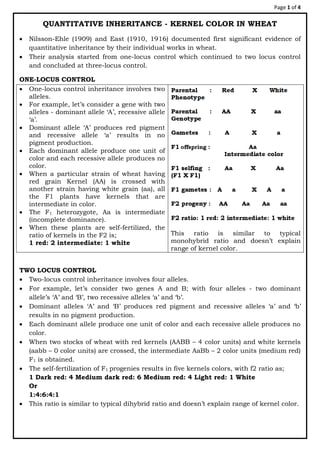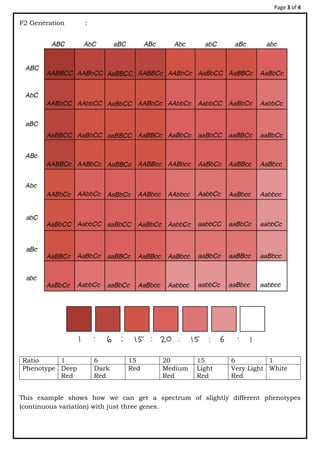The document discusses quantitative inheritance of kernel color in wheat, exploring one-locus, two-locus, and three-locus control. It describes how allele combinations result in different color phenotypes through various genetic ratios, ultimately demonstrating the emergence of a continuous spectrum of kernel colors. The findings of early geneticists like Nilsson-Ehle and East highlight the complexity of inheritance beyond simple dominant-recessive relationships.



